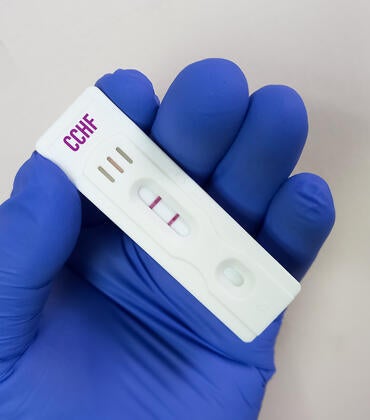
A mouse study led by University of California, Riverside biomedical scientists suggests that everyday exposure to microplastics — tiny fragments shed from packaging, clothing, and countless plastic products — may accelerate the development of atherosclerosis, the artery-clogging process that leads to heart attacks and strokes. The harmful effects were seen only in male mice, offering new clues about how microplastics may affect cardiovascular health in humans.
“Our findings fit into a broader pattern seen in cardiovascular research, where males and females often respond differently,” said lead researcher Changcheng Zhou, a professor of biomedical sciences in the UCR School of Medicine. “Although the precise mechanism isn’t yet known, factors like sex chromosomes and hormones, particularly the protective effects of estrogen, may play a role.”
Microplastics are now found nearly everywhere: in food, water, the air, and even inside the human body. Recent human studies have detected microplastics in atherosclerotic plaques and linked higher levels to increased risk of cardiovascular disease. However, scientists didn’t understand whether or how microplastics directly contribute to artery damage.
“It’s nearly impossible to avoid microplastics completely,” Zhou said. “Still, the best strategy is to reduce exposure by limiting plastic use in food and water containers, reducing single-use plastics, and avoiding highly-processed foods. There are currently no effective ways to remove microplastics from the body, so minimizing exposure and maintaining overall cardiovascular health — through diet, exercise, and managing risk factors — remains essential.”
In a paper published in Environment International, Zhou and his team report their use of a well-established mouse model for studying heart disease: LDLR-deficient mice, which are prone to developing atherosclerosis. They fed both male and female mice a low-fat, low-cholesterol diet, similar to a lean, healthy person’s diet.
The researchers then gave the mice a daily dose of microplastics (10 milligrams per kilogram of body weight) for nine weeks at levels considered environmentally relevant and similar to what humans may encounter through contaminated food and water.
The researchers found microplastics dramatically worsened atherosclerosis, but only in males. In male mice, microplastic exposure increased plaque buildup by 63% in the aortic root, the first section of the aorta that attaches to the heart; and 624% in the brachiocephalic artery, a blood vessel that branches off the aorta in the upper chest. In female mice, the same exposure did not significantly worsen plaque formation.
The study found microplastics did not make the mice obese or raise their cholesterol. The mice remained lean, and their blood lipid levels did not change, meaning the increased artery damage was not due to traditional risk factors like weight gain or high cholesterol.
The study also found microplastics altered key cells that line the arteries. Using single-cell RNA sequencing, a technology that helps identify which genes are expressed in each cell and at what level, the team found that microplastics disrupted the activity and proportions of several types of cells involved in atherosclerosis, especially endothelial cells — the cells that line blood vessels and regulate inflammation and blood flow.
“We found endothelial cells were the most affected by microplastic exposure,” Zhou said. “Since endothelial cells are the first to encounter circulating microplastics, their dysfunction can initiate inflammation and plaque formation.”
In the team’s experiments, fluorescent microplastics were found to enter plaques and localize within the endothelial layer — findings consistent with recent human studies showing microplastics in arterial lesions.
Another finding the researchers report from their experiments is that microplastics triggered harmful gene activity in both mouse and human endothelial cells. Exposure to microplastics was found to activate pro-atherogenic (plaque-promoting) genes in endothelial cells from mice and humans, suggesting a shared biological response.
“Our study provides some of the strongest evidence so far that microplastics may directly contribute to cardiovascular disease, not just correlate with it,” Zhou said. “The surprising sex-specific effect — harming males but not females — could help researchers uncover protective factors or mechanisms that differ between men and women.”
Zhou and his team acknowledge that more research is needed to understand why males are more vulnerable. The researchers plan to perform studies to determine if similar effects occur in humans.
“We would like to investigate how different types or sizes of microplastics affect vascular cells,” Zhou said. “We will also look into the molecular mechanisms behind endothelial dysfunction and explore how microplastics affect male and female arteries differently. As microplastic pollution continues to rise worldwide, understanding its impacts on human health — including heart disease — is becoming more urgent than ever.”
Zhou was joined in the study by colleagues at UCR, Boston Children’s Hospital and Harvard Medical School in Massachusetts, and the University of New Mexico Health Sciences.
The study was partially supported by grants from the National Institutes of Health.
The title of the paper is “Microplastic exposure elicits sex-specific atherosclerosis development in lean low-density lipoprotein receptor-deficient mice.”
Header image credit: wildpixel/iStock/Getty Images Plus.





